Commercial creativity: The new image of former industrial zones
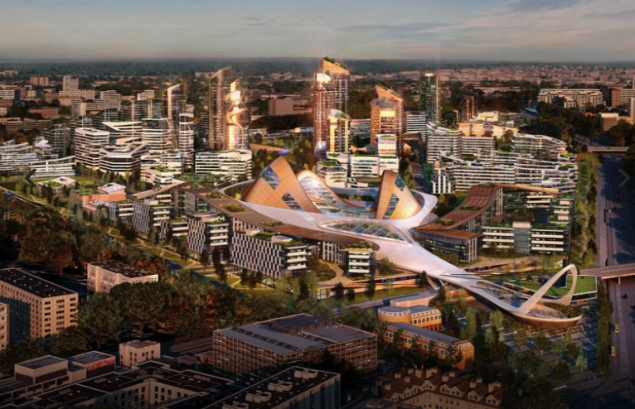
In the past, these factory floors bustled with activity, as their workers bottled wine, manufactured vacuum gauges and generated electricity for the first city trams. Industrial zones are now receiving a new lease of life: their territories are being improved, old buildings are giving way to office developments, exhibition halls and areas for artistic creativity.
Industrial zones cover an area of about 19,000 hectares or almost 17 percent of the city’s total territory. Many of them were not used for decades, with their buildings falling into disrepair, rusting away and becoming covered with waste. The city decided to turn these zones into new attractions for local residents.
Some former plants have already changed beyond recognition, and others will eventually be overhauled. Their buildings are either being converted into industrial architecture landmarks or are demolished and replaced with new infrastructure. How do major industrial enterprises turn into areas for artistic creativity? Why are creative production facilities sited inside former workshops and gas holders? This mos.ru story discusses the city’s former industrial zones and their cultural prospects.
Touring the Winzavod, the Flakon, Arma and the Artplay Centre
These are well-known names to modern art admirers. The Winzavod gets people looking to tour modern art galleries, meet with artists or attend workshops. The Flakon hosts concerts, festivals and quests. The Artplay Centre sells custom-made interior decorations and operates a skating rink. And the former Arma Plant has a co-working facility and loft spaces. Today, it is hard to believe that all these buildings had accommodated industrial facilities and had nothing to do with creative pursuits. The Moscow Gas Plant (now the Arma Business Quarter) whose factory floor hosted a play in 1924 is the only exception.
Winzavod Modern Art Centre
Established in 2007 on the site of the city’s oldest brewery, this is the first and largest private modern art centre in Russia. In the past the facility accommodated a honey-making factory and a brewery; it was later replaced with a factory manufacturing sealing-wax, resins and corks.
In the 1870s and the 1880s, the plant operated three steam machines with a total capacity of 45 hp. It employed 70 workers and turned out premium-quality Vienna Pure Number 1 beer that cost 1.6 roubles per pail. It also brewed and bottled the famous Velvet Black beer. The major brewery later turned into the Moscow Integrated Works of Grape and Dessert Wines that manufactured its own fruit-and-berry wine brands from 1889 and also bottled grape wines being delivered from Crimea and the Caucasus.
Over the decades, its workers brewed beer, manufactured wine and installed new foreign-made equipment. The plant was sold and resold countless times. The former major brewery has now been converted into the Winzavod Modern Art Centre boasting its own modern art galleries, workshops for artists, fashion designers and photographers, cafés, creative show-rooms, children’s studios and shops. The Modern Art Support Foundation that was also established here helps young artists to implement their projects.
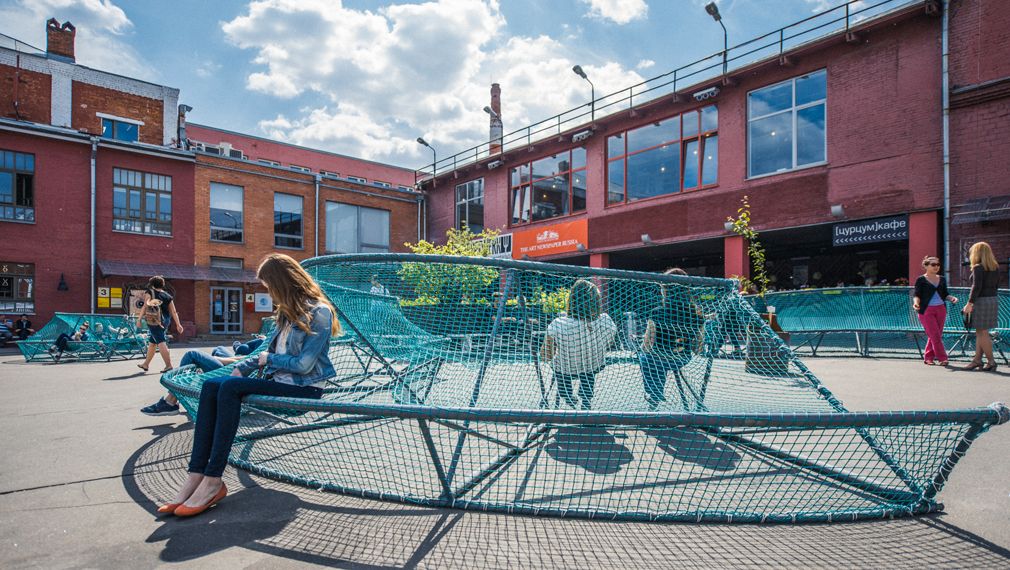
Flakon Design Plant
In 2009, the Plant for Manufacturing Creative Industries, also called Flakon Design Plant, opened on Bolshaya Novodmitrovskaya Street.
This company’s history began in 1841 when two Frenchmen, Alphonse Rallais and Frederick Dutfois, came to Moscow. Two years later, they managed to open a cosmetics and perfumes factory called A. Rallais & Co. By 1864, the company had expanded production many times over and needed plenty of perfume flasks. In 1864, Frederick Dutfois bought a 2.2-hectare plot from the Church of Nativity on Bolshaya Panskaya Street and built a crystal/glass plant to manufacture perfume flasks. Apart from flasks, the plant turned out icon-lamps and medical, commercial and structural glass.
After the October 1917 Bolshevik Revolution, the plant was nationalised and renamed the Kalinin Moscow Crystal Plant. It received new buildings that survived to this day and began producing crystal-ware.
During the Great Patriotic War of 1941-1945, the plant manufactured various items for the Red Army. By the late 1940s, it resumed production of perfume flasks.
This facility’s recent history began in the mid-2000s after creative companies received space inside local workshops. Project authors retained the distinctive red-brick buildings with high ceilings, as well as the plant’s symbolic name. They also coined an appropriate motto “Create what you want!” Flakon started hosting market events, charity fairs, concerts, quests and festivals.
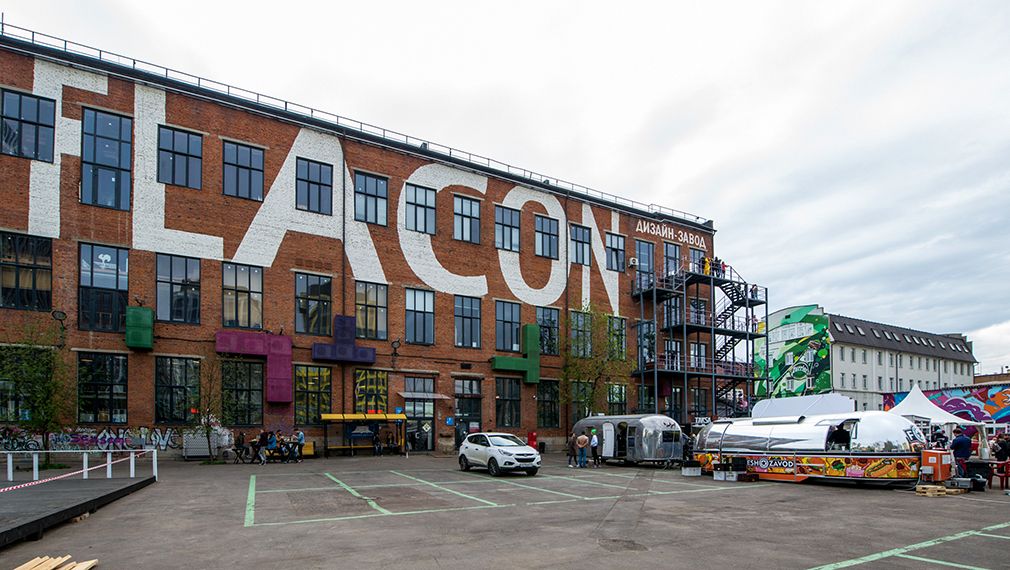
Artplay Design Centre
This centre accommodates designers and architects working at various design studios, architectural bureaus and show-rooms. It also features photo studios, cafés and exhibition halls, a skating rink, a cinema and various entertainment facilities. Established in 2003, the Artplay Design Centre moved to the former Manometer Plant on the Yauza River only in 2008. Before that, it was located on Miusskaya Square and later inside a building on Timur Frunze Street.
The Moscow Manometer Instrument Engineering Plant was established in 1886 and manufactured safety valves, reduction gear and steam valves, manometers and vacuum gauges, thermometers, hydraulic scales and other tools for various industries.
The plant on Nizhnyaya Syrmyatnicheskaya Street was among the oldest companies opened by Fyodor Gakental, a member of the petty bourgeoisie from Podolsk. The plant profited from the expanding Russian industry and railway construction sector. Its management expanded product range in 1922. And it became the only Soviet enterprise to manufacture equipment for the Moscow Metro. During the war, its production facilities were evacuated to Tomsk and were returned in 1948 and sited inside upgraded workshops. Many of the plant’s goods boasted unique metrological specifications and performed better than their Russian and foreign equivalents.
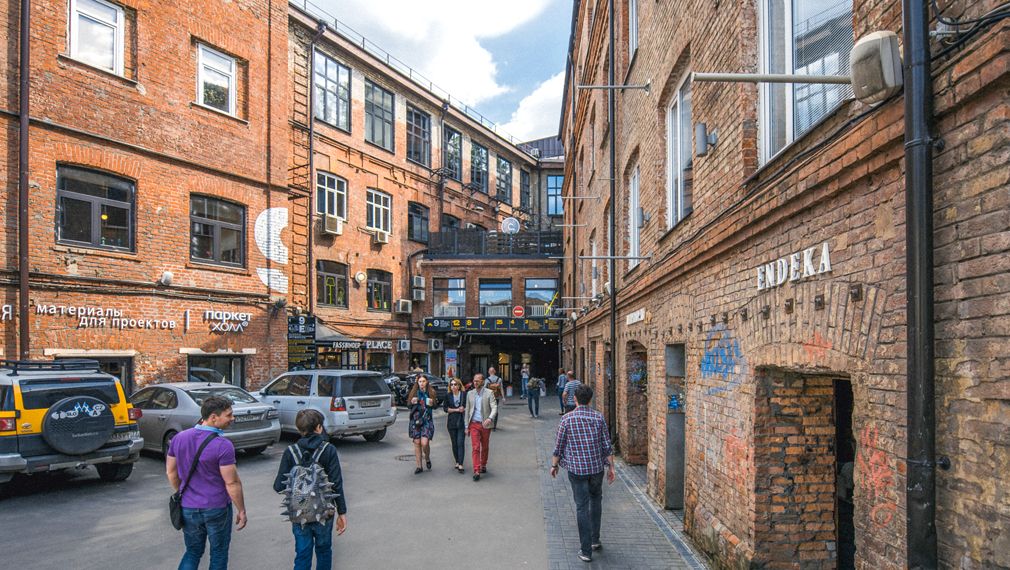
Arma Business Quarter
The Winzavod Modern Art Centre and the Artplay Design Centre are part of a large quarter for creative activity that also accommodates the Arma Business Quarter.
The facility is located near the Garden Ring and an embankment of the Yauza River where the former Moscow Gas Plant once functioned. Its gas holders create an inimitable atmosphere, and the quarter’s territory resembles upgraded gas plants in Vienna, Copenhagen, Dresden and other cities.
Construction of the Moscow Gas Plant was launched in 1865. Its gas holders were designed by architect Rudolf Berngard. On 27 December 1866, Moscow Mayor Prince Alexander Shcherbatov opened the plant. The first symbolic gas lamp was lit near the Kremlin’s Archangel Cathedral to mark the occasion. Three years later, the plant’s experts operated and maintained 3,000 gas lamps in the city.
In 1911, the Moscow City Duma allocated several million roubles for upgrading and expanding the plant. In an effort to boost its capacity, the city installed six new buildings here and an additional gas holder; the production process was also streamlined.
On 29 February 1924, one of the plant’s workshops hosted a debut of the play “Gas Masks” written by Sergei Tretyakov especially for workers and directed by Sergei Eisenstein. The play became a milestone in the biography of young film and stage director Sergei Eisenstein and in the life of the Moscow Gas Plant. After staging this play, Eisenstein decided to focus on filmmaking. For plant employees, the play became an unprecedented event merging culture and production.
The Moscow Gas Plant supplied gas all over the city until the mid-20th century. After an overhaul, it was renamed Arma Production Firm and started manufacturing gas-pipe locks, pressure regulators, valves and filters.
In the late 1990s, the Arma Plant virtually stopped functioning, and then in 2003 musicians, designers, producers and artists started arriving here.
The enterprise was upgraded completely in the 2010s; its old buildings were restored, and the gas holders were converted into offices while retaining their architectural image. The former plant now accommodates the Arma Business Quarter with co-working facilities, loft spaces, cafés, a printing office, a rehearsal room, a design bureau and architectural studios.
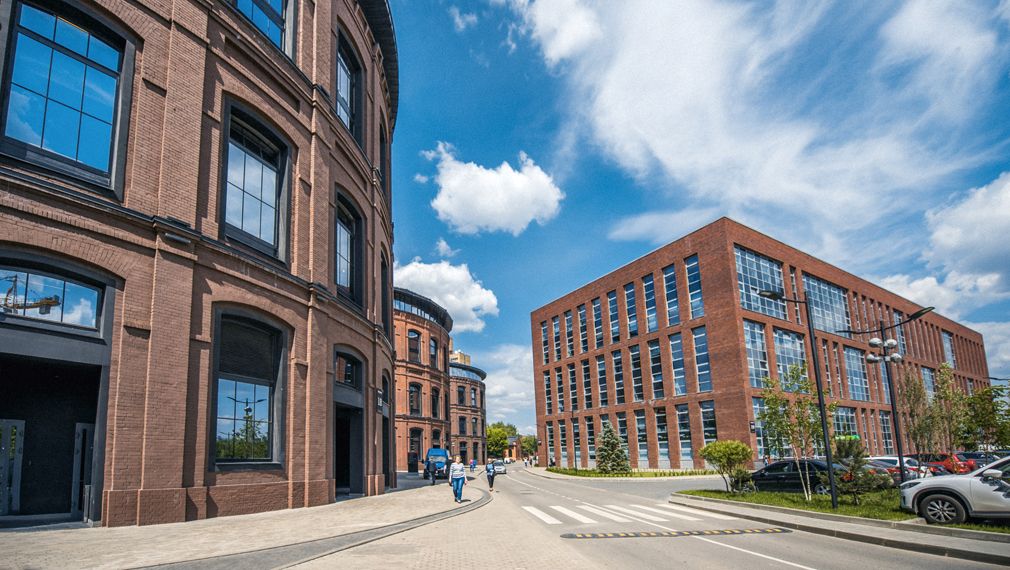
Rediscover ZIL, Bread Plant No. 9, HPP-2 and the Hammer and Sickle industrial zone
The ZIL industrial zone
The Likhachyov Automotive Plant was founded in 1916. Over the years, its experts repaired foreign-made lorries, mastered production of vehicle engines and developed Soviet-made vehicles. From 1924 until 2009, the plant manufactured about eight million lorries, 40,000 buses and 12,000 passenger cars. In 1951-2000, it turned out 5.5 million household refrigerators. And in 1951-1959, the plant assembled over three million bicycles. Over 630,000 of its vehicles were exported to 51 countries.
In 2013, production was suspended here, and the city approved a territorial re-planning project for the facility. The industrial zone was divided into nine sections for building residential areas, a business centre, a park, a sport cluster and even an automotive plant. This will become a city within a city with its own transport infrastructure, jobs, social facilities, as well as leisure/recreational areas and those for creative work.
An affiliate of the world-famous State Hermitage Museum is to open here. The former industrial zone will receive parks with a total area of 14 hectares, a pedestrian boulevard, an improved embankment, as well as theatres, concert halls, picture galleries and art centres.
A new boulevard, one of the city’s longest, will stretch for over 1.2 kilometres here. The boulevard will feature several squares with their own key landmarks, a large fountain and the Hermitage-Moscow Museum Centre.
The ZIL park’s concept is based on the public-art idea, which seeks to merge art with city space. The area will receive a 50,000 square metre lawn and flowerbeds with perennials. The sport cluster and dog-walking zone will feature a shade-resistant and trample-proof lawn. The park will have its own 3,000 square metre pond with pedestrian and cycling lanes.
In late autumn, over 700 trees and 2,500 shrubs will be planted at the former automotive enterprise. Pine trees, Siberian larches, birch trees, poplars, linden/lime trees, alder trees and red oak trees will replace workshops and warehouses.
The Park of Legends sport and entertainment city quarter and the Ice Hockey Museum with multimedia technologies will become the upgraded territory’s central section.
Hydropower Plant No. 2
In the late 19th century, the Moscow City Duma decided to upgrade the local public transit system and to replace Konka horse-drawn trams with their electric equivalents. The first electric trams started operating in 1899. Hydropower Plant No. 1 on Raushskaya Embankment powered the tram lines’ contact wires for some time. The city tram system continued to develop rapidly, consuming about 30 percent of the above-mentioned power station’s electricity by 1907.
Hydropower Plant No. 2 was opened on 2 February 1907 (Gregorian calendar) and housed power generators. Cables laid on the bottom of the Moskva River transmitted the station’s electricity to the Lubyanskaya, Krasnoprudnaya and Miusskaya substations. Later, its electricity was also transmitted to the Sokolnicheskaya substation. Here, alternative currents were converted into direct 600-volt currents that powered the trams. The installation of new equipment made it possible to stop using electricity from Hydropower Plant No. 1 by 1909.
In 1947, all boiler rooms at Hydropower Plant No. 2 completely converted to gas fuel. In the 1990s, the station’s equipment was upgraded, with new technologies making it possible to build a much smaller facility nearby and to vacate the old building.
The building of Hydropower Plant No. 2 on Bolotnaya Embankment is currently being converted into a cultural facility. Architects will preserve its original look. The main engine room will turn into the central exhibition space. The pipes will be converted into air-circulation systems providing natural ventilation and reducing power consumption. The main façade will serve as a climate regulator, protecting the inner premises from cold. Its solar panels will generate electricity, and the main façade will also shield the galleries from direct sunlight. The building will use the energy of the Moskva River and collect rainwater. Generated electricity will make it possible to establish a winter garden on the premises.
Project authors want to acquaint the guests with the main principle for reusing the building. The guests will see the solar panels and a mechanism for pumping fresh air through the pipes. The architects are planning to install sensors that will activate devices or additional screens and tell visitors about the work of Hydropower Plant No. 2. For its part, the art facility will host exhibitions, concerts and lectures.
Bread Plant No. 9
The building of Bread Plant No. 9, located on Novodmitrovskaya Street and near Flakon Design Plant, is currently being converted into a new city space. This bread plant was opened in 1934 and operated until the summer of 2015.
In the 1920s and the 1930s, the city implemented a state programme to build new bread plants. In all, 11 bread plants were built at the time, including five designed by engineer Georgy Marsakov. He suggested building a classic straight conveyor belt and turning it into a spiral. This solution made it possible to boost output and provided the building with an unusual architectural layout.
A large-scale reconstruction project that was launched here in 2016 is to end next year. The five-hectare area will receive designer clothing shops, educational facilities, cafés, barber shops and office loft spaces. Starting with the third floor, the main cylindrical building will house creative residences featuring the full range of living and office amenities. The plant will also host festivals, concerts and lectures.
Hammer and Sickle industrial zone
In the late 19th century, a French business manager established the Moscow Iron & Steel Works shareholding company here. The company was nationalised during the Soviet period and converted into the Hammer and Sickle Moscow Iron & Steel Works, the largest factory in Central Russia. During Soviet times, the enterprise manufactured pipes, steel goods, wires and metal sheets. Output decreased dramatically after the 1990s. The plant’s workshops closed one after another, and the enterprise was shut down completely in 2011.
Today, there are plans to build a modern city district here; it will accommodate housing, social infrastructure and various landmarks. The district’s territory will be improved, and trees and shrubs will be planted here. It will receive a media centre, and a former production building will be converted into the House of Culture and Music. This will become the main attraction for the new district and the entire city. A leading world-famous architectural bureau with experience of building concert halls will implement the entire project. This will become the most advanced concert hall in the city, with room for 3,500 spectators; it will house music studios, singing classes and other music-education facilities.



